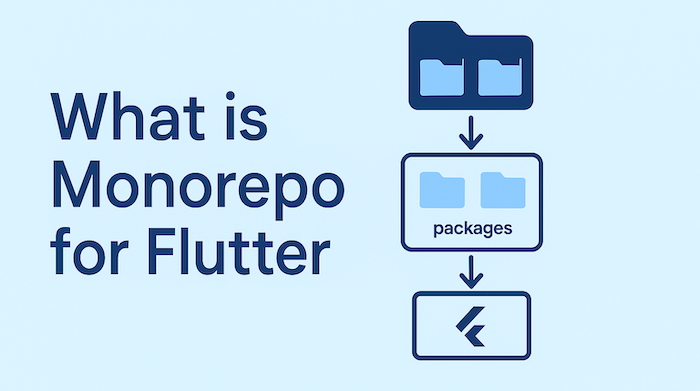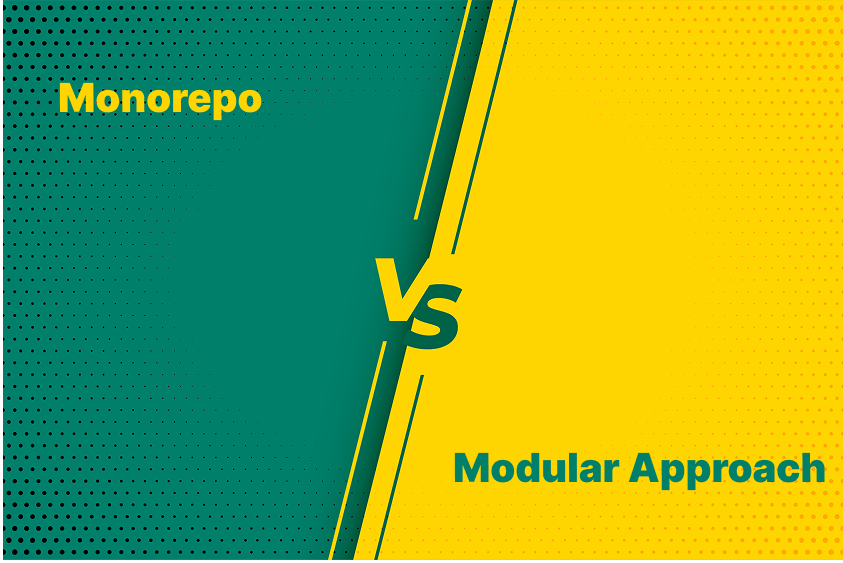Introduction
Managing large-scale Flutter applications in enterprise environments is no small task. Multiple teams, shared components, and complex CI/CD pipelines can quickly become overwhelming. That’s why more companies are adopting a monorepo architecture—a single repository that contains all apps, packages, and shared code.
In this blog, we’ll explore what a Flutter monorepo is, why enterprises use it, how to set it up, and the best practices to make it work efficiently.
What is a Monorepo in Flutter?

A monorepo (monolithic repository) is a single codebase that houses multiple Flutter apps, packages, and modules. Instead of maintaining separate repositories for each app or feature, enterprises keep everything under one roof.
✅ Key differences from multi-repo setups:
Monorepo → One repository for everything.
Multi-repo → Each app/module has its own repository.
This approach provides better collaboration, consistency, and dependency management across enterprise projects.
Why Enterprises Choose Monorepo for Flutter
Flutter is already designed for cross-platform development, and when paired with monorepo, enterprises get:
Easier dependency management → All apps and packages share a single set of dependencies.
Unified CI/CD pipelines → Automations apply to the entire project.
Code reusability → Shared UI components, business logic, and services can be reused.
Better team collaboration → Developers work in the same repo, reducing silos.
Scalability → Perfect for organizations managing multiple apps (B2B, B2C, internal tools).
Setting Up a Flutter Monorepo

Step 1: Define Folder Structure
A clean structure is essential:
Step 2: Use Tools Like Melos
Melos is a popular Flutter tool for monorepos. It helps with:
Managing dependencies across packages.
Running scripts across all apps.
Versioning and publishing shared packages.
Step 3: Leverage Dart Workspaces
Workspaces simplify package linking and management, ensuring smooth dependency resolution.
Best Practices for Flutter Monorepo Architecture
✅ Adopt Modular Design Principles
Separate UI, business logic, and services into independent packages.
✅ Use Semantic Versioning
Ensure consistent updates across packages.
✅ Automate with CI/CD
Use GitHub Actions, GitLab CI, or Bitrise for testing & deployments.
✅ Enforce Code Standards
Use linting, formatting, and documentation across the repo.
✅ Git Strategies for Teams
Feature branches + pull requests.
Protect
mainorreleasebranches.
Common Challenges and How to Solve Them
Long Build Times → Use caching, selective builds, and CI optimizations.
Dependency Conflicts → Centralize dependency management in
pubspec.yaml.Onboarding New Developers → Provide documentation + setup scripts.
Testing at Scale → Automate unit, widget, and integration tests.
Monorepo vs Modular Approach in Flutter

Modular → Great for smaller projects or when teams want flexibility.
Monorepo → Ideal for enterprises managing multiple apps & large teams.
Hybrid Approach → Some companies keep a monorepo but publish shared packages externally.
Real-World Examples
Google uses monorepos internally for consistency across large teams.
Many enterprises using Flutter adopt Melos-powered monorepos to maintain scalability.
Community projects (open-source) show faster iteration cycles with monorepo setups.
Conclusion
A Flutter monorepo provides enterprises with the scalability, consistency, and collaboration needed for large projects. By following best practices—like modular design, proper CI/CD, and strong documentation—you can ensure smooth development across multiple teams and applications.
If your organization is building multiple Flutter apps, a monorepo may be the key to long-term success.
FAQs
Q1: What is the best tool for managing Flutter monorepos?
👉 Melos is the most widely used tool, offering dependency management and automation features.
Q2: How do I handle dependencies in a Flutter monorepo?
👉 Use a centralized pubspec.yaml for shared dependencies and apply semantic versioning for internal packages.
Q3: Is monorepo always better than multi-repo for Flutter projects?
👉 Not always. For small projects, multi-repo may be simpler. For enterprises, monorepo offers better scalability and consistency.
